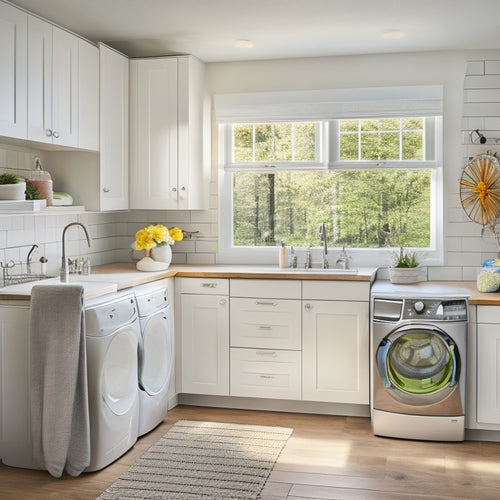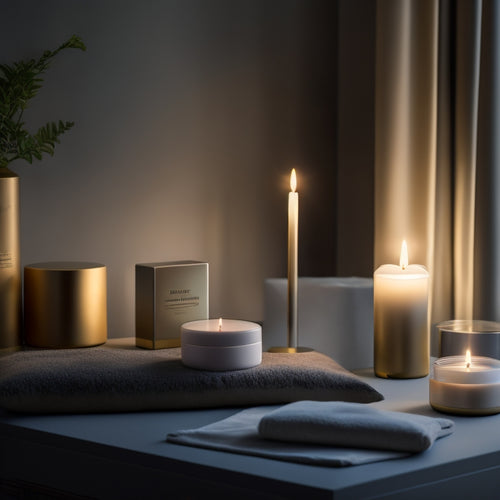
Darkroom Enthusiasts Embrace Traditional Photography Methods
Share
I'm part of a community that wholeheartedly embraces traditional photography methods, reveling in the tactile nature of film and the timeless beauty of craftsmanship that comes with developing prints in a darkroom. We're committed to preserving legacy and upholding artistic integrity, often disconnecting from the digital world to focus on our craft. Our community thrives online, with platforms like PhotoNet and Wai Leong Lee's group connecting enthusiasts and fostering a sense of belonging. As I continue on this path, I discover more about the rich heritage of photography and the unique satisfaction it brings.
Key Takeaways
• Darkroom enthusiasts preserve the legacy of traditional black and white photography, valuing artistic integrity and heritage.
• They employ timeless techniques and equipment, like Leica M6 and Rolleiflex 2.8, to create unique, tactile prints.
• Online communities, such as PhotoNet and Wai Leong Lee's group, provide a platform for enthusiasts to share passion and knowledge.
• Traditional photography methods offer a respite from the digital world, allowing artists to disconnect and focus on craftsmanship.
• The debate between film and digital photography is secondary to the joy of capturing life's beauty through the lens, regardless of method.
Darkroom Devotion: A Legacy
Since 1971, I've been devoted to my darkroom setup, where I've honed my skills in traditional black and white photography alongside fellow enthusiasts like leon strembitsky and russmarshall. Our collective passion for legacy preservation has led us to master the art of traditional printing methods.
For me, darkroom devotion is about maintaining artistic integrity, where every print is a reflection of my creative vision. I've witnessed many shift to digital, but I remain committed to preserving the traditional techniques that have been passed down through generations.
In an era of rapid technological change, I believe it's crucial to hold on to the essence of photography's rich heritage. By doing so, we can uphold that the legacy of traditional black and white photography continues to inspire future generations.
Equipment and Timeless Techniques
As I step into my darkroom, surrounded by the familiar hum of my Leica M6 and Rolleiflex 2.8, I'm reminded of the timeless appeal of traditional photography equipment that has enabled me to hone my craft for decades.
My classic equipment, paired with enduring processes, allows me to create unique, hands-on experiences that digital cameras can't replicate. I cherish the tactile nature of loading film, the anticipation of development, and the satisfaction of holding a physical print.
My darkroom is a sanctuary where I can disconnect from the digital world and reconnect with the art of photography. With every click of the shutter and every print I make, I'm grateful for the opportunity to preserve the legacy of traditional photography.
Community and Shared Passion
What role do online communities and forums play in fostering a sense of camaraderie and shared passion among traditional photography enthusiasts?
As I've discovered, they're instrumental in creating a space for like-minded individuals to connect, share, and learn from each other.
Online forums like PhotoNet and Wai Leong Lee's group have brought together over 907 members, providing a platform for community support and artistic camaraderie.
Members like Aplumpton, Lou_Meluso, and lex_jenkins actively share their experiences, offering valuable insights and expertise.
This collective passion for traditional photography has created a sense of belonging, motivating enthusiasts to continue exploring and perfecting their craft.
Through online communities, we've found a sense of home, where our love for film and darkroom techniques is celebrated and nurtured.
Embracing Tradition Amidst Change
In an era of rapid technological advancements, I find myself drawn to traditional photography methods, cherishing the tactile nature of film and the artisanal quality of darkroom printing.
There's something special about the hands-on approach, the satisfaction of watching an image come to life under the red glow of the darkroom lamp.
As the world around me evolves at breakneck speed, I find comfort in the timeless beauty of traditional craftsmanship. It's not about rejecting progress, but rather embracing the unique qualities that make film photography so special.
Amidst the sea of change, I'm proud to be part of a community that values the slow, deliberate process of darkroom printing, where every print is a labor of love and a demonstration of the enduring power of traditional photography methods.
The Film Vs. Digital Divide
I often find myself pondering the age-old debate between film and digital photography, wondering where I stand in the midst of this ongoing discussion. As a darkroom enthusiast, I've come to realize that the film vs. digital divide is more about personal preference than right vs. wrong.
Some, like bobcossar, swear by traditional wet darkroom methods for preserving authenticity, while others, like Lou_Meluso, opt for a hybrid approach, scanning and printing digitally. I've seen both sides coexist, with each having its unique advantages.
For me, it's about embracing the analog vs. digital dichotomy and finding what works best for my creative vision. By doing so, I can focus on what truly matters – capturing life's beauty through the lens.
Frequently Asked Questions
What Safety Precautions Should Be Taken in a Darkroom Environment?
When I'm in the darkroom, I prioritize safety by ensuring proper ventilation systems and wearing protective gear like gloves and goggles to avoid chemical mishaps - it's better to be safe than sorry (and blinded by mistake)!
How Do You Organize Your Darkroom Space for Optimal Workflow?
"As I slide into my darkroom, it's like slipping into a comfortable pair of gloves - familiar, cozy, and ready to create. I organize my space by prioritizing darkroom ergonomics, optimizing workflow efficiency with labeled shelves, and strategically placed equipment for a seamless dance."
Can I Convert an Existing Room Into a Darkroom, or Start From Scratch?
When converting a room into a darkroom, I consider the room's size, natural light, and ventilation first. Then, I assess my budget constraints to determine what equipment I can afford, and plan accordingly.
What Are the Essential Chemicals and Materials Needed for Darkroom Development?
"Ah, the thrill of poisoning myself with toxic chemicals! Just kidding, sort of. Seriously, for darkroom development, I need reliable developer recipes and chemical alternatives, like D-76 and HC-110, to achieve those perfect B&W prints."
Are There Any Online Resources for Learning Darkroom Techniques and Best Practices?
I'm enthusiastic to learn darkroom techniques and best practices; I've found online resources like darkroom tutorials on YouTube and online mentors on photography forums, offering valuable guidance and support to help me refine my skills.
Related Posts
-

Revamp Your Laundry Room With Smart Space-Saving
You're tired of feeling cramped and disorganized in your laundry room, and it's time to revamp the space to make the ...
-

Discover Luxurious Self-Care Essentials at Foundry Home
At Foundry Home, discover a curated world of luxurious self-care essentials, expertly designed to elevate relaxation ...

